My Musical Diary for Violin
Hello! How are you? Come and find out more about what I have been up to!

This is a new page which I decided to add to my webpage.I thought it would be nice to write about some of my thoughts on the music I am playing.
I have to admit that presently all my efforts have been focused on my piano playing. My poor violins have not had much work to do! Nevermind, I will promise to play more violin in the next few months.
July 2006:
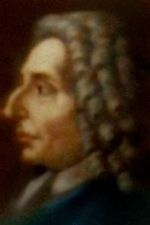
Vitali Ciaconna. It is very interesting to look at the original version of the work (Hortus Musicus ed), and the subsequent romantic 19th century editions by Ferdinand David (Peters Ed) and Charlier (IMC i think) who have certainly added to the text. These 19th century editions have added to the technical difficulties in the piece, especially by adding octaves in higher positions, and lthough they are very nice to play they are far from the original text and context that the piece was originally conceived.
JS Bach: various dances from Partitas in D minor and E major
August 2006 to September 2006
Revisiting the following Etudes, Studies and pieces:
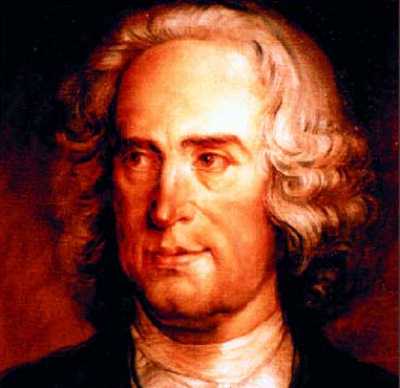
Locatelli: 25 Caprices. Each caprice is the cadenza from a concerto. Elizabeth Wallfisch has recorded the 25 concertos but I do not know whether all 25 concertos are in print.
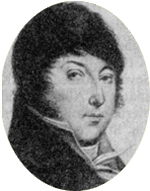
Etudes by Kreutzer, yes the bible of violin playing!
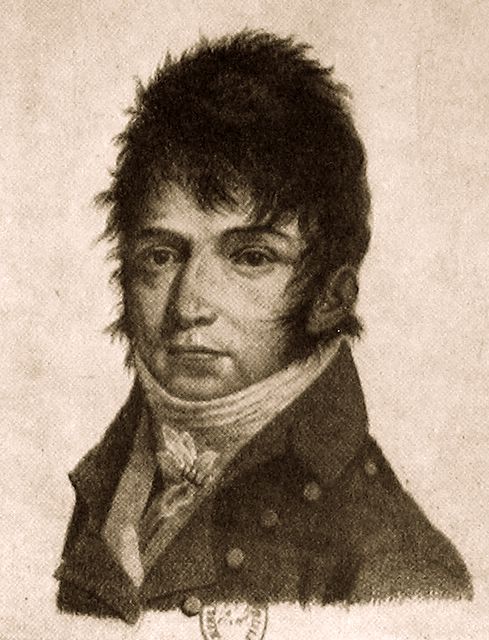
Etudes by Rode
Mozart concerto No 5 in A Major KV219. I love No 3 (G major) and No 4 (D major) as well. I am not so keen on no 2 but I also like no 1. Most artists have recorded nos 1-5 as a set, however, there are two more concertos which a

Viotti concerto No 22 in A minor
Accolay Concerto in A minor. A very lyrical work, one of my favourites. I understand that the late Dorothy Delay, pedagogue to the US stars of violin playing, used to include it in her teaching. I think there is a second concerto in D minor, but I have not found it yet.

Svensen: Romance. This is one of my favourite Romances. It is special to me as this piece was in my recital programme with which I won my violin Scholarship to St Peters College, Oxford University. it was also one of my first pieces that I studied with Lydia Mordkovitch
October 2006:
Revisiting the following Etudes, Studies and pieces. It is good to sometimes play old studies as it focuses your mind on what aspect of technique each study requires.
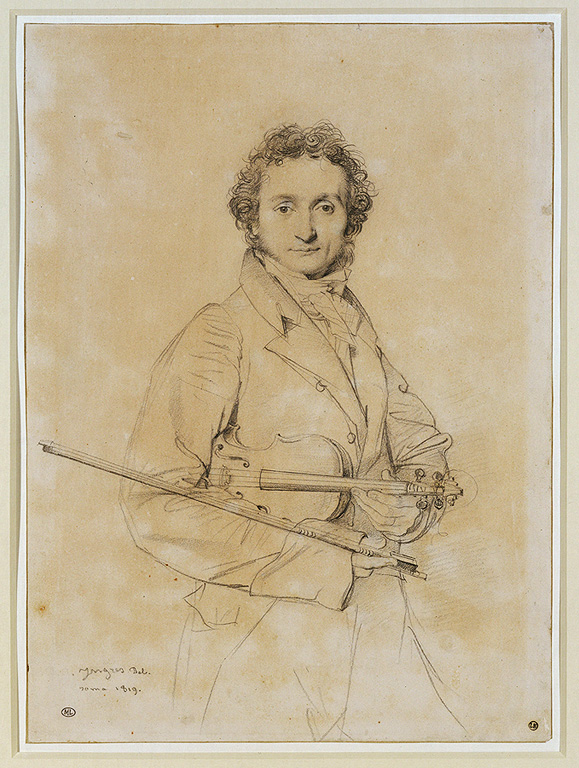
Paganini: Moto Perpetuo. I find this work very useful to do different bowings to
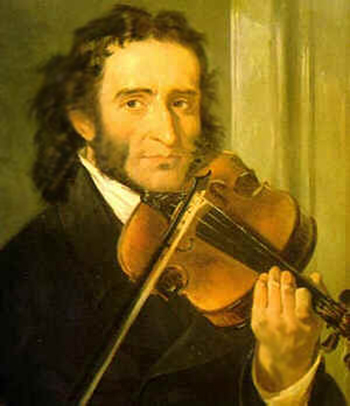
Paganini: Caprice Op 1 No 9 in E major.
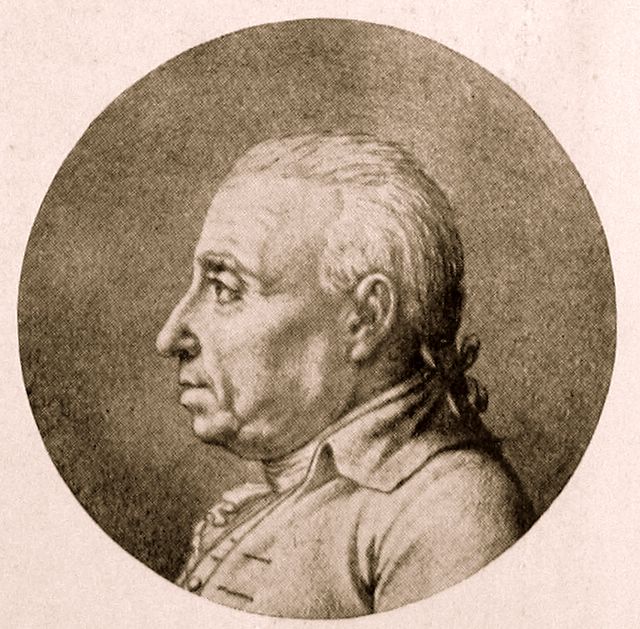
Etudes by Gavinies. I like these, they are harder than the Rode caprices.
Etudes/ Caprices by Rode and Fiorillo. Some of my favourite studies. I like the Fiorillo etudes as well. It seems such a shame that no other music by Rode, Fiorillo, Dont etc are in the current concert repertoire. However, I have noticed that some publishing houses have reprinted some of the Rode and Kreutzer concerti. I have them but I have not played through them yet. I do have a recording of Carl Flesch playing a Fiorillo etude.
Etudes by Mazas Op 36. I really like these, but they are simplier than the Gavinies Etudes.

Etudes by Jacob Dont (op 35 I think). Again i really like these etudes. His preparatory etudes to Kreutzer are also interesting. Other than a few other studies for violin duet, i do not know of any other music of Dont's in print.
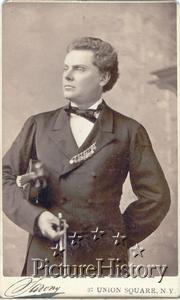
Bach/Wilhelmj Air on a G string. I really like this arrangement and it is fun to play on just one string only. Other than this work and Wilhelmj's arrangement of Schubert's Ave Maria, none of his other compositions are played in concert nowadays. His arrangement of Paganini's first concerto in D major (originally in E flat with the use of Scordatura) was recorded by Kriesler and is published by Schirmer but I do not think that this version is played in concert so much.
November 2006:
I'm afriad I have not played much this month, I have been more focused on teaching and the Southend Music Festival. However, I have played the following works:
Many dances from the Bach Partitas in D minor and E major
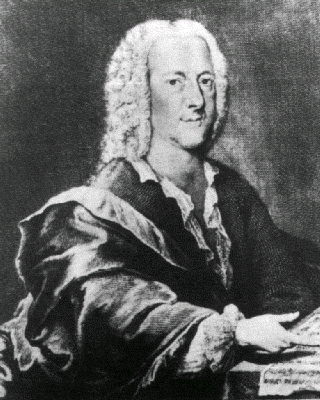
Telemann: a few of the solo Fantasies. These are not as profound and technical as unaccompanied Bach, but they are lovely.
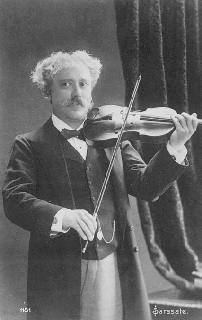

Sarasate Introduction and Tarantella. Tarantellas are one of my favourite dances
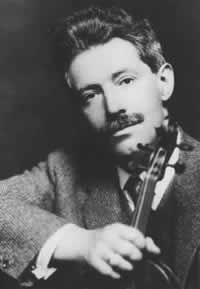
Kreisler: A selection of his compositions. My favourite has to be the Praeludium and Allegro in the syle of Pugnani and the Tempo di Minuetto.
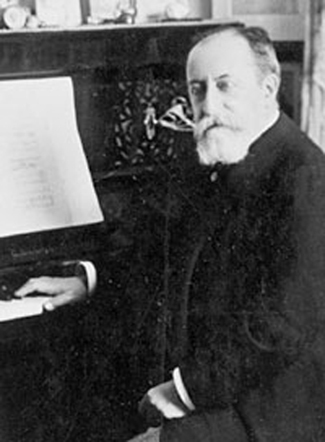
Saint-Saens: Introduction and Rondo Capricioso: I'm a tad rusty at this work at the moment, need more practise!
December 2006:

Etudes by Fiorillo. I really like these, especially the string crossing and the ones utilising 5th to 7th position. The c minor study on the G string is quite useful for student learning to play on one string only, but my favourite ones are the studies with string crossing and bariolage and nos 11 and 12

Brahms: revisiting the concerto. I simply adore the opening solo of the first movement, such fire and passion!
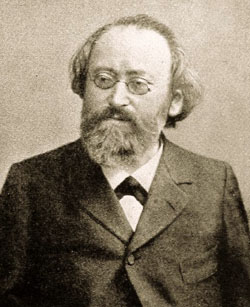
Bruch: revisiting the first concerto. Although this concerto is done to death (especially on Classic FM!) to the detriment of the other 2 concertos and the Scottish Fantasy, I love it, especially the slow movement. However, I do love the Scottish Fantasy though, particularly the first movement.
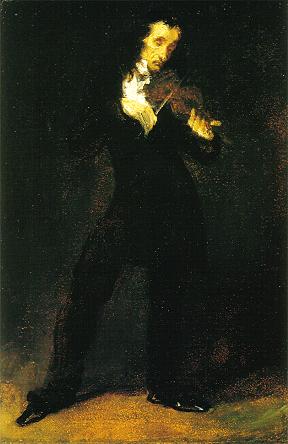
Paganini: Cantabile. This is really a very sweet piece which is quite dear to me, as I played it at my school leaving concert in 1996, so everytime i play it it brings back fond memories. It was also one of the first pieces i studied with Keith Pascoe of the Britten Quartet, where he taught me about bow expression.The first time i heard this piece it was played by Midori and I knew that I just had to learn it!

Beethoven Concerto: revisiting this amazing work - also helps with my scale and arpeggio practise!
Bach: Allemande, Courrente, Sarabande and Giga from solo Partita in D minor. This partita is my favourite of the 3. I used to practise this all the time at school, and loved playing it in an empty classroom or the hall listening to the resonance. I have used 3 editions, Flesch (Peter Edition), Szeryng (Schott) and Galamian (IMC). It is interesting to note that in the Chaconne, Galamian carries on the arpeggiation but Flesch instead varies the bowing to become a detache repeated note arpeggio which I quite like. Many artists have recorded the Flesch version including Nathan Milstein and my techer Lydia Mordkovitch. I know that Perlman and Rachel Podger hasve recorded the Galamian version. Some tradiationalist may say that the Flesch version may not reflect what Bach 'intended', but then I say, look at what a Chaconne is, a set of variations, and Flesch has just added nother bowing variant after a cadence, perhaps to keep up the interest. I prefer the Flesch version. The IMC edition reproduced a fasimile of Bach's manuscript. It is quite fun playing the sonatas and partitas from this once you get used to his handwriting. The Flesch edition has a two staves, the edition by Flesch and the original Bach bowing version underneath. This is very useful for interpretation. I have found that i really only like 3 recordings of the unnacompanied Bach (Rachel Podger, Perlman and Lydia Mordkovitch). I am not so keen on the recordings by Heifetz, Mennhuin and Milstein - they are very 'dated' and old fashioned in their approach. Other dated recordings are by Kreisler. I am quite lucky though as I recall that I have a recording of David Oistrakh provided to me by that amazing recordings collector Raymond Glaspole in Oxford.
Svendsen: Romance - I can't help but play this piece!
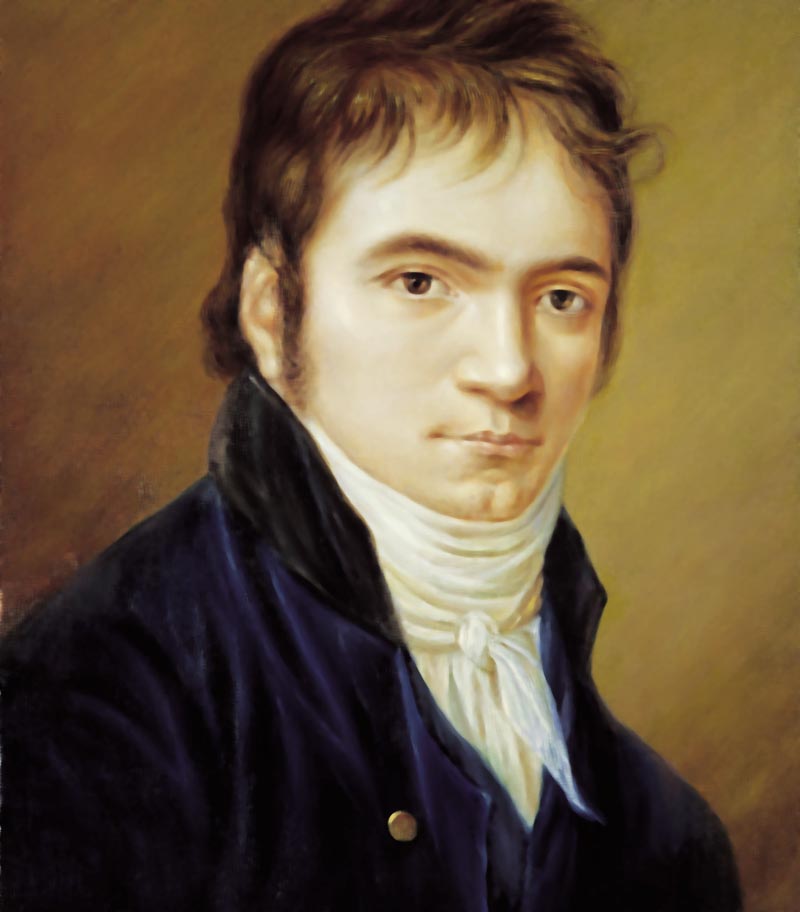
Beethoven: Romance no 2 in F major - This has a special place in my heart along with the Svendsen. I studied this with my first violin teacher Brenda Farrow, who played this piece at Mansion House when she received her Gold Medal from the Guildhall in 1946.I have all the bowings and fingerings that her teacher Max Rostal taught her in this piece.

Back to the school of Schradiek - my best friend! My warm up exercies that Lydia set me
Mazas op 36 - well there are 75 studies to go through!
January 2007:
I bought two new shoulder rests (a Kun for £70.00!!!!This is too expensive, but it is comfortable) from Guivier, and new strings (Pirastro Oliv and Obligato). Hopefully this expense will kick me into practising more :-p
I also bought Hejre Kati and Bolero by Jeno Hubay (published by Boswoth) from Chappells
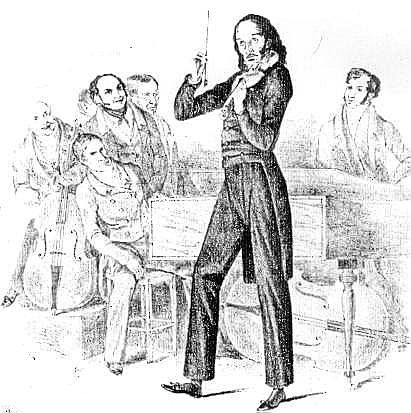
Paganini: Moses Fantasy on the G string. This is new to me, will do me good to practise all on the one string, especially the very high positions. Surprisingly no left hand pizz, mainly artificial harmonics.
Accolay: concertinos in A minor and D minor. Yes, during my trip to London on 9 January, I found 3 concertinos by Accolay, A minor, D minor and E minor published by Kalmus. I will try to learn the E minor as well. In comparing the D minor to the A minor, the A minor is more technical, but both are very lyrical works.
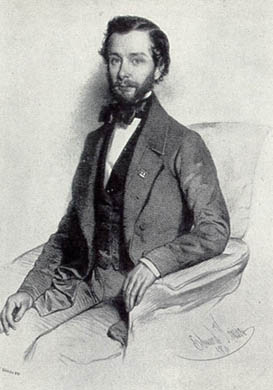
Vieuxtemps: concert etudes. I decided to tackle no 1 and 2 so far.
Bartok: Roumanian Folk Dances - one of my favourite suite of dances. I remember playing this at school and also at a recital at the Holywell Music Room in Oxford, where Handel & Haydn performed.
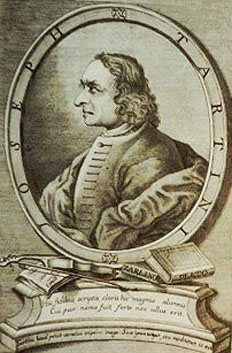

Tartini: Devil's Trill Sonata. This is one of my favourite sonatas. I have played both Kreisler's edition of the work, as well as the urtext edition of this work. The two editions are very interesting to compare, in fact Baroque violinist Andrew Manze has recorded the urtext version but plays it solo violin with no continuo. Kreisler's version is usually played in the 'Romantic style' and he added a cadenza of trills which I do not think is in context with the music. The urtext edition contains more dissonances and double stopping in the opening movement.
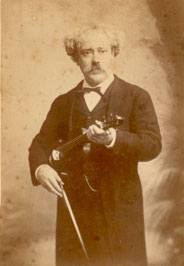
Sarasate: Introduction and Tarantella, and Zigeunerweisen (Gypsy Airs) - very rusty at these, more practise needed.
April 2007:
Hardly any practise in March really, very naughty, but Jane Compton came over at Easter to play piano duets with me, and we also played Brahms' sonata in A major, Svendsen Romance and Massenet's Meditation. A pleasant afternoon of music making!
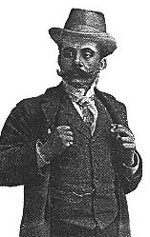
Monti: Czardas. My goodness it has been a very long time since I played this. Good practise for sautille bowing though. A delightful pieces full of contrastings technic. My favourite sections are the artificial harmonics and double stops.
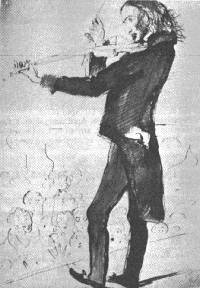
Paganini: Caprice op 1 No 10 in G minor, hello staccato bowing!
Rode: Caprices in A minor, and E minor.
May 2007:
Kreutzer: Etudes
Dont: Caprices
Rode: Caprices
Gavinies: Etudes
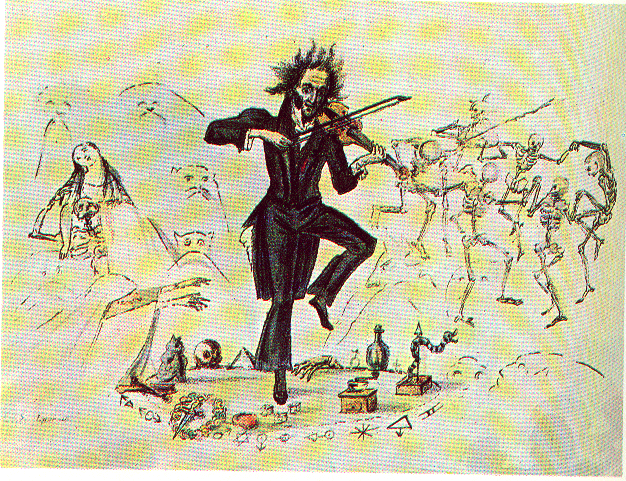
Paganini: Caprices op 1
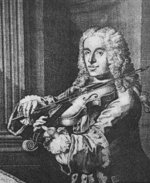
Veracini: Concerto in F
Accolay: Concerto no 2 in D minor.
June 2007:
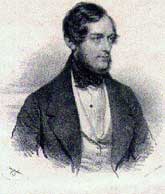
Charles de Beriot: Scene de Ballet

Brahms: Concerto in D. First Movement
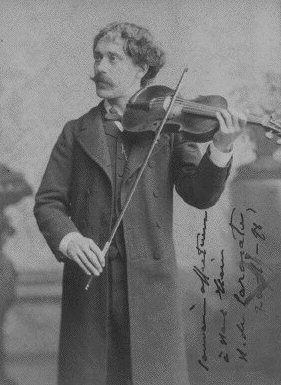
Sarasate: Introduction and Tarantelle
Kreutzer: Etudes
Vitali/ Charlier: Ciaconna in G minor
Beethoven Concerto. First Movement
July 2007:
I haven't practised much since I returned from Hong Kong, but I was a good boy last night and practised all my scales! :-p My Rubio was sounded better too.
Tartini: Sonata Didone Abandonata. I love this, I remember studying this with Lydia Mordkovitch. I play a Russian edition, which has four movements. The additional 3rd movement is possibly not part of the original text but is very nice to play.
Back to technique, lots of studies again - love'em! Got to keep in shape :-)
August 2007:
A burst of enthusiasm to practise! I've been waking up early to practise the violin in the morning before work. I feel so refreshed and pleased that I'm putting in the effort and time on my neglected violin playing! Going over solid ground again in technique for good intonation before i revert to Wieniawski Etudes and the Paganini caprices
Carl Flesch Scalesystem. Back to this old bible. Working on scales, arppegios, diminished and dominant 7ths, on one string, 3 octaves, thirds, sixths, octaves, tenths and harmonics. Actually really enjoying it! The double harmonics are a killer though!
Schradieck: School of violin. I find the exercises in5th position and above most useful
Ricci: Lefthand technique. This book is a gem. Useful lefthand pizz exercises. He does use the main lefthand pizz from Sevcik but takes other examples from Wieniawski and Paganini
Paganini: Moto Perpetuo. I use this to practise various different bowings, staccato, sautille, spiccato, martele and other slurred bowings. It's more interesting than the usual op 2 and op 3 Sevcik
Svecik: Op 9 Double Stops and Op 8 Shifting exercises. I actually give these to my students as they are very useful indeed. It is nice to go over them again though in practise. I usually work on the shifting exercises in op 1
Mozart: concerto no 4 in D major K218. I love the first moment so much, such a happy and tender mood
Kreutzer: Back to these goodies this morning! Very handy for 4th and 5th position practise :-)
Locatelli: 25 Caprices
Dont Etudes/ Caprices
Gavinies Etudes
Rode Caprices, these are my favourites!!!
September 2007:
Still in the early morning practise mode, although, i prefer to stay in bed. I have to make myself get out of bed (or am I pushed out by the teddybears?). Once i'm out of bed and wake the cat torture/ strangling, I mean work begins :-p
A mixed bag of etudes and caprices by Fiorillo, Dont, Rode, Gavinies, Kreuzter, Locatelli and Wieniawski
Tartini: Devil's Trill Sonata
October 2007:
Carl Flesch Scalesystem
Gavinies: Etudes
Brahms: Concerto (first and second movements)
November 2007:
Carl Flesch Scalesystem
Gavinies: Etudes
Rode: Caprices
Locatelli: Caprices
Mendelssohn: Violin concerto in E minor
Wieniawski: Obertass & Dudzriaz Mazurkas
December 2007:
Carl Flesch Scalesystem
Gavinies: Etudes
Rode: Caprices
Dancla: Etudes Brilliants
Kabalevsky: Improvisation
Wieniawski: Scherzo-Tarantella
Bach: Solo sonata in C major: allegro
Paganini: Mouvement Perpetual: This is not the same work as Moto Perpetuo (which I prefer). Supposedly, Paganini played this piece quite often on tours.
January 2008:
A new year, a new leaf! I hope to do more regular practise this year. Hello early mornings. Hopefully, I will get easier to get out of bed when winter goes away and it becomes warmer and lighter in the mornings (that's my excuse)
Ivan Galamian Scales
Tchaikovsky: Violin concerto (first movement)
Tartini: Devil's Trill sonata
Faure: Sicilienne
Sarasate: Introduction & Tarantella
Sarasate: Caprice Basque
Wieniawski: Scherzo-Tarantella
Bach: Partita in E: Preludio
Saint-Saens: Introduction & Ronodo Capricioso. Very rusty, but nevermind, more practise!
Mendelssohn: concerto in e minor op 64, first and second movements
Schradieck book 1 - positions. most useful.
February 2008:
Kreutzer: good old bible! Good to go over old things.
Gavinies: Etudes
Dont: Etudes/ Caprices op 35
Wieniawski: Etudes op 18
Locatelli: Caprices
Schradieck: Book 3 bowing exercises
Ricci/Sevcik: Lefthand Pizzicato exercises
de Beriot: Harmonics etude
Bach: Concerto no 1 in A minor. This was one of the first concertos I studied with Brenda Farrow, and my first Bach concerto that I learnt. I love this work from the first time I heard a recording of David Oistrakh playing it.
Bach: Concerto no 3 in E major. This is the second Bach concerto I learnt when studying with Brenda Farrow. The first movement is longer and technically more difficult than the first movement of the A minor concerto. Both slow movements of no 1 and no 2 are gorgeous, and I prefer the last movement of the A minor over the E major
March 2008:
Rode: Caprices
Locatelli: Caprices
Gavinies: Etudes
Brahms: sonata no 1 in G major (first movement)
Franck: Sonata in A major. I so love this. I first heard this work on an old Biddulph recording of Yehudi Menuhin and his sister playing it. In the last movement he plays octaves instead of just playing the notes an octave higher. It is an recording of the young Menuhin, but I think his sister was the better player and musician in the recording!
Bach: Last movement: allegro of the C major solo sonata
Bach: Partita no 2: Allemande. I love this opening dance. I used to love practising it in the classrooms and hall at school when I was a schoolboy (I'm an old man now!); I always think unaccompanied solo violin music sounds great in large open rooms and churches.
Bach: Partita no 3: Preludio. This was Jacques Thibaud's renowed warm up piece. Ysaye in his sonatas made reference to it entitling it 'obsession'. I am just fond of the string crossing and bariolage. When I try fiddles, this is one of the first works I play on them.
April 2008
I have decided to do some revision of technique this month
Ricci/ Sevcik: Lefthand Pizz study
Schradieck: Book 1: revision of 4th, 5th, and 6th positions.
Kreutzer etudes. Revision
Rode: Caprices revision
Seitz: Concerto no 1 in D major. Played this one a long time ago, but nice to play over old things.
Bach: Sarabande and Gigue from Partita no 2
Dont: OP 37. These are wonderful for developing a good foundation of first, second and thrid positions with occasional dips to fourth and fith positions. Good revision work!
Vivaldi: Winter concerto. I really love this one. I don't usually love all the movenets of man concertos, but i do on this.
May 2008
A delightful Sunday afternoon playing repertoire with pianist Yeu-Meng Chan:
Tartini: Sonata in G minor 'Abandonata didone
Massenet: Meditation from Thais
Mozart: Sonata in E minor
Rachmaninoff: Vocalise
Brahms: Sonata in A major
Svendsen: Romance
The rest of the month I spent in Hong Kong and didn't take my violin with me!
June 2008
Bach: Partita in E major
No violin practise whilst I was in Hong Kong for my holiday, but 3 delightful Sunday afternoons of chambermusic with Yeu Meng Chan on the piano:
Handel: Sonata in D major. This is an old friend and movements have been set for grades 8 and 6 for the ABRSM violin exams
Handel: Sonata in F major
Tartini: Didone Abandonata sonata in G minor
Elgar: Chanson de la nuit. This is rarely played and less popular than the Chanson du matin and Salut d'amour, but it is actually a very nice piece and should be played more. Fortunately, the ABRSM have set it for grade 6 this year.
Elgar: Chanson du matin. A beautiful work.
Elgar: Salut d'amour (second version). Another beatuiful work. The first version differs slightly, but it is the second version which is usually played.
Veracini: Largo. A poiniant work which i dearly love. It is not well known but was played a lot by Ricci.
Williams: Schindler's List theme music. I haven't watched the movie but this music is very heartfelt and jewish sounding.
Mozart: Sonata in E flat major
Mozart: Concerto no 5 KV219 in A major. This is another old friend with fond memories of playing this concerto in my youth at school and on the television
Beethoven: Spring Sonata
Svendsen: Romance - one of my favourites which I studied with Lydia and chose as part of a recital programme which I won my Oxford Scholarship. Lydia has also recorded it on her album Apassionato on Chandos
Nardini: Concerto in E minor. This is one of my olf favourites. Such a sweet and emotionally charged first movement, lyrical second movement and fun major/minor 3rd movement. Have you heard Mischa Elman's recording of it on Vanguard Classics? He plays everything at a slow tempo, but I love his 'golden' tone
Elgar: Idyll. This is relatively unknown compared to his most popular pieces. It is not particularly difficult, but not as beautiful as Salut d'amour and the two chansons
Kreisler: Prelude & Allegro in the style of Gaetano Pugnani. This is my favourite piece!!!!
Beethoven: 2 Romances in G and F. I love these and studied them with my first teacher Brenda Farrow. She played the F major Romance at Mansion House when she was awarded her Gold Medal from thr Guildhall School of music in 1946.
Telemann: Fantasie in E flat. I remember performing this in Church where the acoustic was just right for this unaccompanied work. I have fond memories of working on this piece with Ruth Waterman, particularly, interpretation and understanding of baroque bowing from violin treatises and tutors. When I learnt the B flat Fantasie with Lydia (which was before we worked on unaccomanpied Bach), her approach was less historical to Ruth Waterman, and mainly about precise phrasing and bowing, possibly with a more modern/ romantic approach. Have a listen to Andrew Manze's recording of them.
Handel: Sonata in G minor.I'm not such a fan of this, but the first movement is nice
July 2008
Reviewing old pieces and choosing new ones for students. Some of my music has fallen apart, so I ordered new copies from James Dace and Sons of Chelmsford. They have a very helpful and efficient sheet music department!
Severn: Polish Dance - very mazurka-like but not as hard as Wieniawski mazurkas but nevertheless a good meaty piece for intermediate level students to learn. A combination of chords, double stops, and harmonics.
Potstock: Souvenir de Sarasate: This is quite a fun piece with much spanish flavour and feel in the style of Sarasate - a feel for lightness of the bow is needed. A good piece for double stops shifting practise from first to third positions. Also it has much fun with the left hand pizz and harmonics - a l,ittle showy piece for a concert or recital. It has also been set by ABRSM for grade 7
Oskar Rieding: Air Varie. This was quite fun to play through. Easy but effective. It is not difficult but a good exercie in bowing and rhythm
Leo Portnoff: Concertino in A minor. This was written mainly for first to third positions, but extending into other positions is quite desirable as well for expression.
Jenkinson: Elfentanz. This is a fun moto perpetuo perfect for practising sautille bowing. Other simialr works for the same bowing technique are the Carl Bohm Moto Perpetuos published by Shimrock.
Josephine Trott: Puppet Dance. This is an easy piece introducing simple left hand pizzicato. In the triplet passages, fourth finger extensions can be utilised.
Locatelli: L'art del violino caprices
JS Bach: Preludio from Partita no 3 in E major
JS Bach: Allegro from Sonata in C major
More revision: Dont op 35 etudes and good old Kreutzer
Leon de Saint Lubin: Grand Caprices/ etudes op 42 (IMC edition)
Gavinies Etudes - a selection
Bach: Allemande and Giga from Partita no 2 in D minor
Mozart concerto no 5 in A major K219
August 2008
Locatelli: L'arte del violino caprices no 1, 2, 3 and 4.
Wieniawski: Etudes/ Caprices op 18.
Rode: Caprices
Dont op 35 Caprices/ Etudes
Leon de Saint Lubin: Grand Caprice op 42 no 1.
Vieuxtemps: Concerto no 4 in D minor. First and third movements. I prefer this concerto to his No 5. I don't find no 5 attractive as I feel it suffers from lack of melody; at least no 4 has melody and fireworks.
Gavinies Etudes - a selection
Bach: Allemande and Giga from Partita no 2 in D minor
Tartini: A selection of movements from Devil's trill and Didone Abandonata sonatas
September 2008
Vieuxtemps: Concert Study no 1 op 16
Nardini: Sonata in D (opening movement)
Bach: partita no 3 in E major: Preludio. This is one of my favourite works. Sarasate used to play often in his concert repertoire and Jacques Thibaud used to play this as his warm up.
Ysaye: sonata no 4: Obsession: This sonata was dedicated to Jacques Thibaud. The opening movement is based upon Bach's Preludio from the 3rd Partita. I remember studying both works at the same time.
October 2008
Kreisler: Preludium & Allegro - this is my favourite piece.
Nardini: Sonata in D
Rode: Caprice no 2 in A minor
Wieniawski: Etude op 18 no 3
Dont: Etude op 35 no 8, thirds thirds thirds, good for the intonation!
Kreutzer: Caprice no 35 and others. good revision.
Locatelli: Caprices
Goldmark violin concerto first movement. This concerto is huge, so long! Shame it is rarely played now.
Vitali: Ciaconna. I'm looking at the Ferdinand David- Leopold Charlier edition. The original version on Hortus Musicus edition is much simplier. The Charlier edition adds more technique. David Oistrakh played and recorded this edition.
November 2008
Revision time for this old rusty bucket! Not bags of time to practise this month, I have been busy preparing students for exams and competition
Rode: Caprices - a selection. I have always loved these caprices.
Dont: Etudes/ Caprices op 35: A selection. NO 8 for thirds is great for working on intonation!!!!
Wieniawski: Op 10 L'ecole moderne etudes and op 18 Caprices - a selection
Locatelli: Caprices - a selection
Kreutzer: Etudes - a selection. Good old Kreutzer!
Carl Flesch Scalesytem. A bible but Galamian Scales are good too!
I was in a mood for French School violin music: Viotti Concerto no 22 in A minor. I love this concerto and remember studying it with Lydia Mordkovitch.
December 2008
Mozart concerto no 3 in G major K216. I have heard this played a competition so many times recently, so I thought I would blow off the dust of my music and play it again. It is a good introduction to Mozart's violin concertos. I love all three movements, particularly the first and second. However, I do not like the cadenzas that go with many editions. I prefer to play simpler ones on the lines of the music itself. 19th century and 20th century cadenzas by various composer violinists do seem to be out of context. Improvise your own! I do remember learning this when I was 13 or 14 with my first violin teacher Brenda Farrow. She used all the fingerings and bowings that her teacher Max Rostal taught her whilst at the Guildhall when she was 14 as well. It gives me happy memories of lessons with her. She was very inspiring.
Mozart concerto no 4 in D major k218. I learnt this with Lydia Mordkovitch woth I was little. I loved this work ever since I first heard Itzhak Perlman and David Oistrakh recordings. It is so bright and happy
Locatelli Caprices no 1, 4, and 13 from L'arte del violino.
Rode Caprices no 2 (an old favourite), no 4 and no 8
Dont Caprice no 8
Nardini: Sonata in D major - this is so beautiful
Goldmark: violin concerto (first movement)
Gavinies: Etudes
Stravinsky: Suite Italienne
January2009
A selection of etudes and Caprices by Locatelli, Gavinies, Dont and Fiorillo
Scales, arpeggios and double stops to break in my Guarneri del Gesu copy by Glen A Collins.
Sevcik: Shifting exercises
Goldmark Violin concerto
February2009
Still breaking in my violin. Really enjoying it too
A selection of etudes and caprices by Locatelli, Rode, Wieniawski and Dont
Nardini Sonata in D
Bach violin concerto in A minor
March 2009
Kodaly: Adagio
Nardini sonata in D
Locatelli: A selection of Caprices
Rode: A selection of Caprices
Goldmark: violin concerto
April 2009
Barber: violin concerto - first movement
Vitali: Ciaconna, version by Ferdinand David. This version is truer to the original text and I perfer it.
Nardini: Sonata in D. Second and Third Movements - a really beautiful sonata edited by Feridnand David
Tartini: Didone Abbadonata Sonata - so beautiful, Italian Baroque violin sonatas are just incredible works
de Falla/ Kreisler: La vida breve - a bit of Spanish flavour - get the castonnets out - 'hola!'
May 2009
This month is mainly going over old pieces save for the Goldmark concerto.
Brahms: Schzero - such a strong work and energy- my goodness. It is good to open recitals with it.
Barber: violin concerto: first movement
Goldmark: concerto - first movement
Vitali: Ciaconna
Mozart: Concerto no 4. This is so bright and happy!
June 2009
Nardini sonata in D - complete. Such a beautiful work, i love it to bits.
Barber concerto: first movement
Tartini: Didone Abbandonata sonata. I learnt it such a long time ago, but it is such a fabulous work to play and contrast with the Nardini sonata
Vitali: Chaconne (David).
Locatelli: Caprices
July 2009
A selection of etudes by Dont and Kreutzer
A selection fo caprices by Locatelli, Rode and Fiorillo
Bach: Partita in E major
Vitali: Chaconne
August 2009
Kreisler: Prelude and Allegro
Bach: E major Partita
A selection of etudes and caprices by Wieniawski, Rode, Fiorillo, Locatelli.
Vivaldi: Concerto op 8 no 7 in D minor
Vivaldi: Concerto op 8 Tempesta di Mare in E flat
Vivaldi: Concerto in C major, op 8 'il piacere' it certainly is a pleasure to play!
Vivaldi: Concerto in D major op 8. Lovely lovely lovely. I really enjoy Vivaldi's concerti. Such energy and the melodies are very beautiful even in the fast movements
Ferdinand David: Etude 'Die Spring quelle'. This is one of my favorite string crossing studies that Lydia gave me when I was little.
Elgar: Chanson du Matin and Chanson de la nuit - old favourites
Goldmark concerto
Massenet: Meditation from Thais
Faure: Berceuse - dreamy sleepy music
Rachmaninov: Vocalise
September 2009
Bach E major Partita
A selection of Fiorillo caprices
Barber concerto
October 2009
A selection of Caprices by Rode and Dont
Brahms: Scherzo
Bach concerto in D minor BWV1052a
November 2009
A selection of Caprices by Locatelli and Rode
Bach E major Partita: Prelude
Bach concerto in D minor BWV 1052a
December 2009
Bach E major partita: Prelude and Gavotte
Goldmark concerto
Bach concerto in D minor BWV1052a
Vitali: Ciaconna
Suk: Appasionata from 4 pieces
January 2010
Goldmark Concerto
Barber Concerto
Bach E major partita: Gavotte
Suk: Appasionata from 4 pieces
February 2010
Paganini: Moto Perpetuo - an old favourite
Suk: Appasionata
Bach: E major Partita - Preludio and Gavotte
Goldmark: concerto
Sinding: Suite in A minor
March 2010
Sinding Suite in A minor
Novacek: Perpetuo Mobile in D minor an old old favourite of mine
Bach E major Partita
Kabalevsky: Improvisation
Caprices by Rode, Dont and Locatelli
April 2010
Suk: Ballade and Apassionato
Sarasate: Introduction & Tarantella
Kreisler-de Falla: Danse Espagnole from La Vida Breve
Achron: Hebrew Melody
Achron: Hebrew Lullaby
Ravel: Kaddisch
Mozart: Concerto no 4 k218
Sinding Suite in A minor
Wieniawski: a selection of caprices
May 2010
Mendelssohn concerto in E minor first movement
Bach: Preludio
June 2010
Barber concerto first movement
Sinding Suite in A minor
Carl Flesch and Galamian Scales studies
July 2010
Bach: Gavotte en Rondeau
Vitali: Ciaconna
Wieniawski: a selection of Caprices
Locatelli: A selection of Caprices
August 2010
Bach Partita in E major
Goldmark: Concerto
September 2010
'Baching' mad this month! :-)
Bach sonata in G minor - various movements
Bach partita in E major - various movements
Bach partita in B minor - various movements
October 2010
Wieniawski op 18 caprices no 3 and 4
Paganini Sonata in E minor
November 2010
Dvorak: Romance in F minor
Paganini Sonata in E minor and Moto Perpetuo
Tchaikowsky: Scherzo from Souvenir d'une lieu cher
December 2010
Dvorak: Romance
Wieniawski: various caprices
January 2011
Bach: Presto from solo sonata in G minor
Bach: Bach: Partita no 1: Bouree
February 2011
Vieuxtemps: Concerto no 2 in F sharp minor - passion, passion, passion!
Goldmark: concerto
Paganini: Sonata in E minor
March 2011
Bach: Solo sonata in G minor
Vivaldi: Concerto in E major
Bach: Solo sonata in C major
Vieuxtemps: concerto no 2 in F sharp minor

If you would like to know more about the music I am playing please e-mail me for a chat.
Contact Jena! 
Last updated: 3 March 2011
Please use the Site Navigator menu to view other pages of this website, or alternatively press the 'Back' button on your web browser.
http://www.jenapang.com
COPYRIGHT 2007-2010: JENA PANG. ALL RIGHTS RESERVED.





































